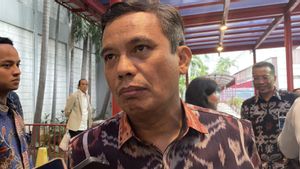JAKARTA - In an electronic series, there is a basic element that is part of the supporting part of an object called an electronic component.
Electronic components are used to form a series of electronics, often electronic components are packaged in a discrete form of two or more connecting terminals.
In addition, the electronic component can also work according to its function, starting from those directly attached to the board, namely CCB, PCB, Protoboard, and Veroboard which are attached by solder.
There is also an electronic component that does not attach directly to the circuit board, one example is the cable.
While the functions of the electronic component are very diverse, ranging from being a booster, inhibitor, author, filter, to controller.
Launching from Classplc.com, here are the types of electronic components along with their functions:
In general, the electronic component is divided into two groups based on its work function and characteristics, namely the passive electronic component and the active electronic component.
Pasif Electronic Components (Passive Electronic Components)
passive electronic components are a group of electronic components that do not require an external source of electricity in its operation.
Examples of passive electronic components include transformers, resistors, capacitors, and inductors.
Active Electronic Components (Active Electronic Components)
In contrast to the passive electronic component, the active electronic component is a group of electronic components that require external electrical flow in its operation.
It can be said that the active electronic component can only function if the electricity is flowed from the outside.
Examples of active electronic components include the IC (Intragrated Circuit) made from semiconductors, transistors, and Diodes.
1. Inductor
Inductors are types of electronic components that function passively or without requiring external flow of electricity.
In the arrangement, the inductor consists of a lined wire arranged to form a coil.
Functionally, conductors play a role in regulating frequencies, as connectors, forwarding directional flows, vibrational plants, and for filtering.
When the conductor is flowed by an electric current it will give rise to a magnetic field capable of storing energy at relatively short times.
2. Resistor
The resistor is a passive electronic component that has a certain resistance value or obstacle to regulating or limiting electricity and voltage in a series.
In general, the resistor is made of carbon and has resistive properties with the value of the Ohm () resistor unit.
There are 4 groups of resistors, namely variable resistors, light resistors, temperature resistors, and permanent resistors.
3. Capacitor
Still in the group of passive electronic components, capacitors or commonly known as condensators are useful for storing electric loads at a certain time.
The capacitor can serve to select radio waves in a series of tuners, as current structuring in a rectifier, an insulator that inhibits DC current, frequency generation in an insulator circuit, as well as a filter in a power supply circuit.
4. Diode
Diode is an active class of electronic components, which requires external electricity to operate.
Functionally, diodes work by delivering electricity in one direction and inhibiting electricity in the opposite direction.
In general, diodes made from semiconductors such as Germanium and Silicon.
5. Transitor
Included in the category of active electronic components, transistors have many functions including oscillators, modulators, controllers, boosters, liaisons and stoppers, and directors.
There are three terminal legs in the transistor, namely the Emitor (K), Collector (K), and Base (B).
Those were some information regarding electronic components along with their functions in electronic series.
By knowing the functions and types of these components, it will certainly make it easier to create a series of electronics later.
The English, Chinese, Japanese, Arabic, and French versions are automatically generated by the AI. So there may still be inaccuracies in translating, please always see Indonesian as our main language. (system supported by DigitalSiber.id)








